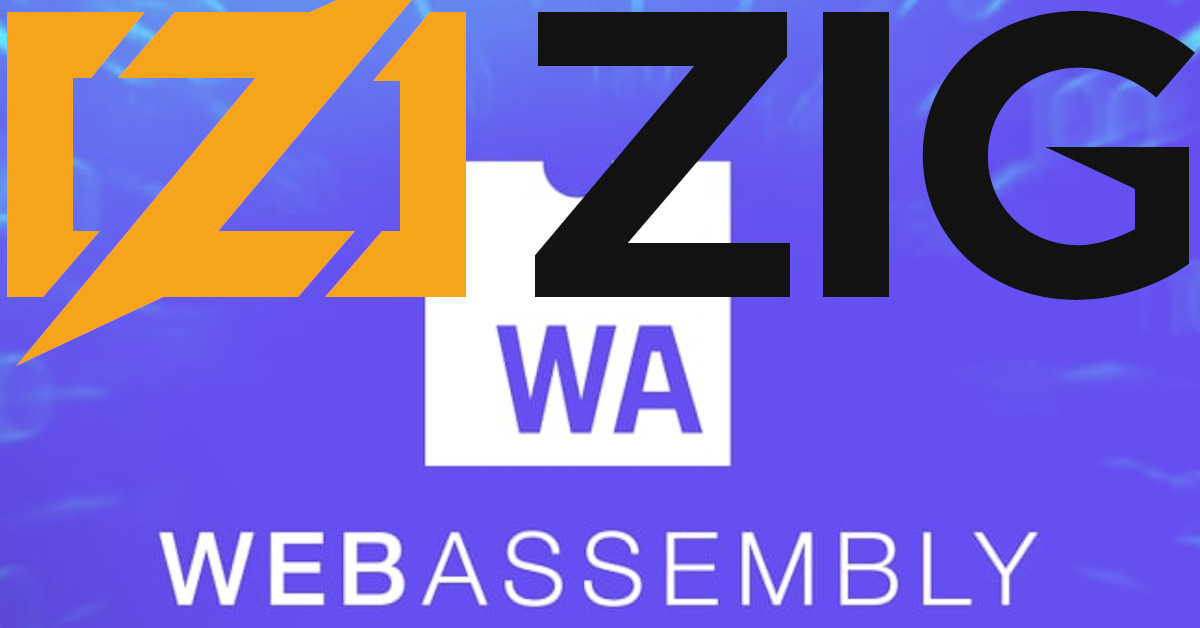
Zig and WebAssembly for Browser Applications: A Powerful Duo
WebAssembly (Wasm) has emerged as a game-changer in the world of web development, allowing developers to bring high-performance, low-level programming languages to the browser. Zig, a statically-typed programming language, has gained attention for its focus on simplicity, performance, and reliability. Combining Zig and WebAssembly opens up new possibilities for building efficient and fast web applications. In this article, we'll explore the synergy between Zig and WebAssembly and provide a practical example of using them in a browser environment.
Understanding Zig:
Zig is a general-purpose programming language that prioritises developer productivity without sacrificing performance. It compiles directly to machine code, providing low-level control while maintaining a modern and expressive syntax. Zig is designed to be concise, predictable, and efficient, making it an excellent choice for systems programming and performance-critical applications.
WebAssembly Overview:
WebAssembly is a binary instruction format that enables high-performance execution on web browsers. It allows developers to run code at near-native speed, opening up possibilities for building complex applications on the web. Wasm is designed to be secure, fast, and portable, making it an ideal choice for performance-critical tasks that traditionally required native languages like C or C++.
Combining Zig and WebAssembly:
Zig can be compiled to WebAssembly, enabling developers to leverage its features in web applications. This combination allows for the development of web applications with near-native performance while benefiting from Zig's language features.
Example: Building a Simple Web Application with Zig and WebAssembly
Let's create a basic example to demonstrate how Zig and WebAssembly can work together in a browser environment. We'll build a simple "Hello, WebAssembly!" application.
Install Zig:
Ensure you have Zig installed on your system. You can download it from the official Zig website: https://ziglang.org/download/
Create a Zig Program a new file named hello.zig with the following content:
// hello.zig
const std = @import("std");
pub fn main() void {
std.debug.print("Hello, WebAssembly!\n", .{});
}This program simply prints "Hello, WebAssembly!" to the console.
Compile Zig to WebAssembly Run the following command to compile the Zig program to WebAssembly:
zig build-obj --target-arch wasm32This command generates a WebAssembly binary file named hello.wasm.
Create HTML and JavaScript File to load and run the WebAssembly module in the browser.
<!-- index.html -->
<!DOCTYPE html>
<html lang="en">
<head>
<meta charset="UTF-8">
<meta name="viewport" content="width=device-width, initial-scale=1.0">
<title>Zig + WebAssembly Example</title>
</head>
<body>
<script src="index.js"></script>
</body>
</html>// index.js
(async () => {
const response = await fetch('hello.wasm');
const bytes = await response.arrayBuffer();
const { instance } = await WebAssembly.instantiate(bytes);
instance.exports.main();
})();Serve the Files using a simple HTTP server. You can use tools like http-server or Python's http.server.
# Example using http-server
npx http-serverVisit http://localhost:8080 in your browser, and you should see "Hello, WebAssembly!" printed in the browser console.
Conclusion:
Zig and WebAssembly offer a powerful combination for building high-performance web applications. By leveraging Zig's capabilities and compiling to WebAssembly, developers can bring the performance benefits of low-level programming to the web. The example provided demonstrates a simple integration, and from here, you can explore more complex applications and take advantage of Zig's features to build efficient and reliable web solutions.